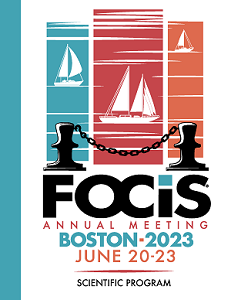Disorders of Innate Immunity
Session: Disorders of Innate Immunity
Establishing Leptomeninges Immune Dynamics and Regulatory Control of T Cell Infiltration in the Degenerating Human Brain
Thursday, June 22, 2023
1:25 PM - 1:40 PM
Location: Salon A-D

Ryan Hobson
PhD Student
Columbia University
New York, New York, United States
Presenting Author(s)
Disclosure(s):
Ryan Hobson: No financial relationships to disclose
Abstract Text: Although several studies have highlighted peripheral lymphocyte infiltration in the degenerating human brain and accumulation of T cells in the meninges in mouse models of Alzheimer’s disease (AD), mechanistic studies into the relationship between immune cells in the brain and its borders are lacking. Here, we used single cell RNA/TCR sequencing of fresh postmortem leptomeninges and paired brain from patients across multiple neurodegenerative diseases to define the relationship between meningeal immunity and immune changes in the degenerating brain. Clonally expanded T cells were detected across both the leptomeninges and brain with significant TCR overlap between the two compartments, and differential expression analysis suggested that infiltrated T cells in the degenerating brain may be activated in the meninges. CellChat analysis between leptomeningeal immune cells further revealed activated T cells as potential targets of HLA-E mediated NK cell recognition. Interestingly, meningeal and brain NK cells were characterized by elevated transcription of the novel neurotrophic c-KIT ligand meteorin-like (METRNL). In vitro analyses are currently underway to assess whether NK cells can regulate activated T cells through NK receptor mediated targeting of HLA-E and whether METRNL plays a role in sensitizing activated T cells to NK cell regulation. In parallel, recombinant METRNL dosing studies in human monocyte-derived microglia-like cells (MDMI) are underway to assess whether NK cell secreted factors can modulate human microglial inflammation and amyloid phagocytosis. This study therefore establishes the relationship between the degenerating human brain and leptomeninges immunological niches and introduces a potential mechanism of NK cell mediated control of neuroimmunity.

